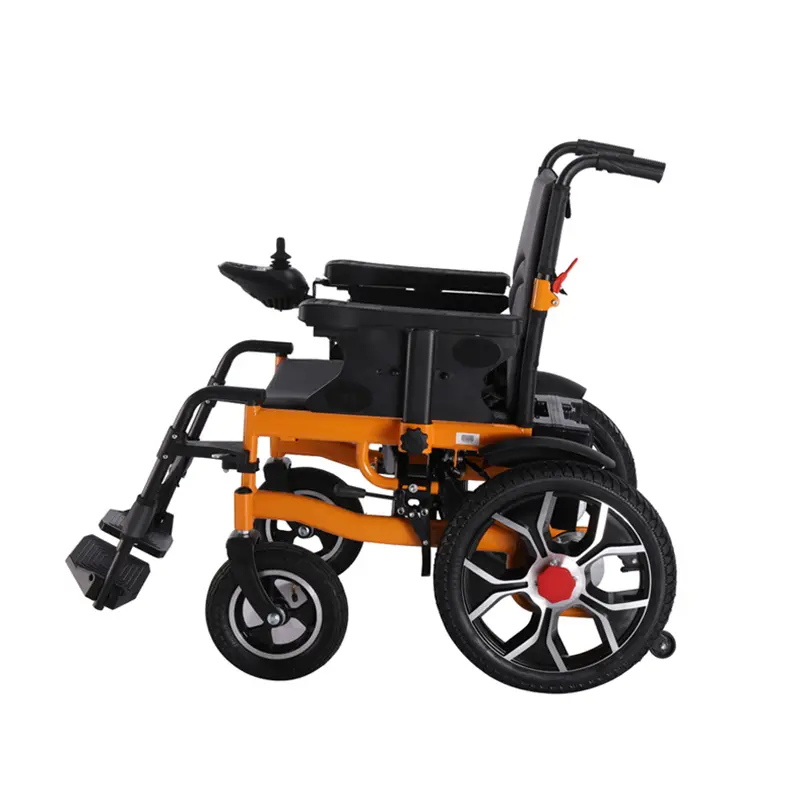Analysis of the Spanish Electric Wheelchair Market Demand: Trends, Opportunities, and Challenges
Introduction
With the increasing global aging population and continuous technological advancement, the market demand for electric wheelchairs, an important assistive mobility device, is rapidly growing worldwide. As one of Europe’s key markets, Spain’s electric wheelchair market also shows significant growth potential.
Current Status of the Spanish Electric Wheelchair Market
Aging Population and Growing Demand
Demand changes in Spain’s demographic structure are a key factor driving the growth in demand for electric wheelchairs. According to data from the Spanish National Statistics Institute, the proportion of elderly people in Spain has continued to rise in recent years. By 2031, the population aged 65 and above is expected to account for [X]% of the total population. As the elderly’s physical functions decline and mobility issues become more prominent, electric wheelchairs have become a key device for improving their quality of life, maintaining social activities, and achieving independent travel. For example, in some senior communities and rehabilitation centers, the provision of electric wheelchairs has increased year by year to meet the needs of the elderly for daily travel and rehabilitation training.
Market Size and Growth Trends
The Spanish electric wheelchair market is expected to be worth approximately US$4.35 billion in 2024 and reach US$4.87 billion by 2025, continuing to expand at a compound annual growth rate of 11.9% between 2025 and 2033. This growth trend is primarily driven by factors such as the growing elderly population, a rise in disability cases caused by traffic accidents, and an increase in cases of arthritis and osteoporosis.
Driving Factor Analysis
Technological Innovation and Product Upgrades
Technological innovation has injected new vitality into the Spanish electric wheelchair market. Today’s electric wheelchairs are no longer simply a means of transportation; they now incorporate advanced navigation systems, smart sensors, and remote monitoring capabilities. For example, a new electric wheelchair launched by a well-known brand is equipped with a high-precision GPS positioning system and collision warning sensors, enabling safe navigation in complex environments. Furthermore, a mobile app allows family members or medical staff to monitor the user’s location and status in real time, significantly improving convenience and safety. These technological upgrades not only enhance the user experience but also attract more consumers to purchase and use electric wheelchairs, thereby expanding the market.
Government Policies and Subsidy Support
The Spanish government’s emphasis on protecting the rights of people with disabilities and the introduction of relevant welfare policies have significantly boosted the development of the electric wheelchair industry. The government has increased subsidies for the purchase of assistive devices for people with disabilities, reducing the cost for consumers. According to statistics, over the past five years, the Spanish government’s budget for subsidies for assistive devices for people with disabilities has grown at an annual rate of [X]%. Furthermore, the government has actively promoted the construction of barrier-free facilities, such as adding barrier-free passageways and elevators in public places, creating better conditions for the use of electric wheelchairs and further stimulating market demand.
Increasing Number of People with Disabilities and Market Demand
In addition to the growing elderly population, the number of people with disabilities in Spain is also increasing. According to relevant statistics, the number of serious injuries caused by traffic accidents in Spain continues to increase annually, further driving demand for electric wheelchairs. For example, in 2022, Spain reported 1,042 fatal road traffic accidents, resulting in 1,145 deaths and 4,008 serious injuries. A significant number of these accident victims require electric wheelchairs to regain mobility, creating new demand for the electric wheelchair market.
Market Trends and Opportunities
Intelligent and Personalized Trends
In the coming years, the Spanish electric wheelchair market will develop towards intelligent and personalized features. With the continuous advancement of IoT and artificial intelligence technologies, electric wheelchairs will incorporate more intelligent features, such as automatic navigation, voice control, and telemedicine integration. Furthermore, consumer demand for personalized designs is increasing, prompting electric wheelchair manufacturers to offer more customization options to meet the aesthetic, functional, and comfort needs of different users.
Emerging Markets and Channel Expansion
As the Spanish market continues to mature, electric wheelchair manufacturers will have opportunities to expand into emerging markets. For example, the demand for electric wheelchairs in smaller cities and rural areas remains underserved, representing potential areas for future market growth. Furthermore, the rise of online sales channels presents new opportunities for manufacturers. Through e-commerce platforms, manufacturers can connect directly with consumers, reduce sales costs, and increase market coverage.
Challenges
Intense Market Competition
The Spanish electric wheelchair market is highly competitive, with both international and local brands vying for market share. International brands, leveraging their strong R&D capabilities and brand influence, have secured a significant market share, while local companies, leveraging their in-depth understanding of the local market and flexible business strategies, are also striving to gain a foothold. New entrants face high market barriers, including challenges in brand building, expanding sales channels, and technological research and development.
Raw Material Price Fluctuations
Raw material costs, such as batteries, motors, and steel, account for a significant portion of the production costs of electric wheelchairs. In recent years, global raw material market prices have fluctuated frequently. For example, lithium-ion battery prices have surged due to supply-demand dynamics and tight raw material supplies. This has directly increased production costs for electric wheelchairs and squeezed companies’ profit margins.
Rapid Technological Upgrades
With the rapid advancement of technology, the technological upgrade cycle in the electric wheelchair industry is becoming increasingly shorter. If companies fail to keep pace with technological development and launch new products that meet market demand, they risk product stagnation and a decline in market share.
Conclusion
The Spanish electric wheelchair market is expected to maintain significant growth over the next few years, primarily driven by an aging population, technological innovation, and supportive government policies. However, factors such as market competition, volatile raw material prices, and rapid technological advancements also pose challenges for companies.
Post time: Aug-15-2025


